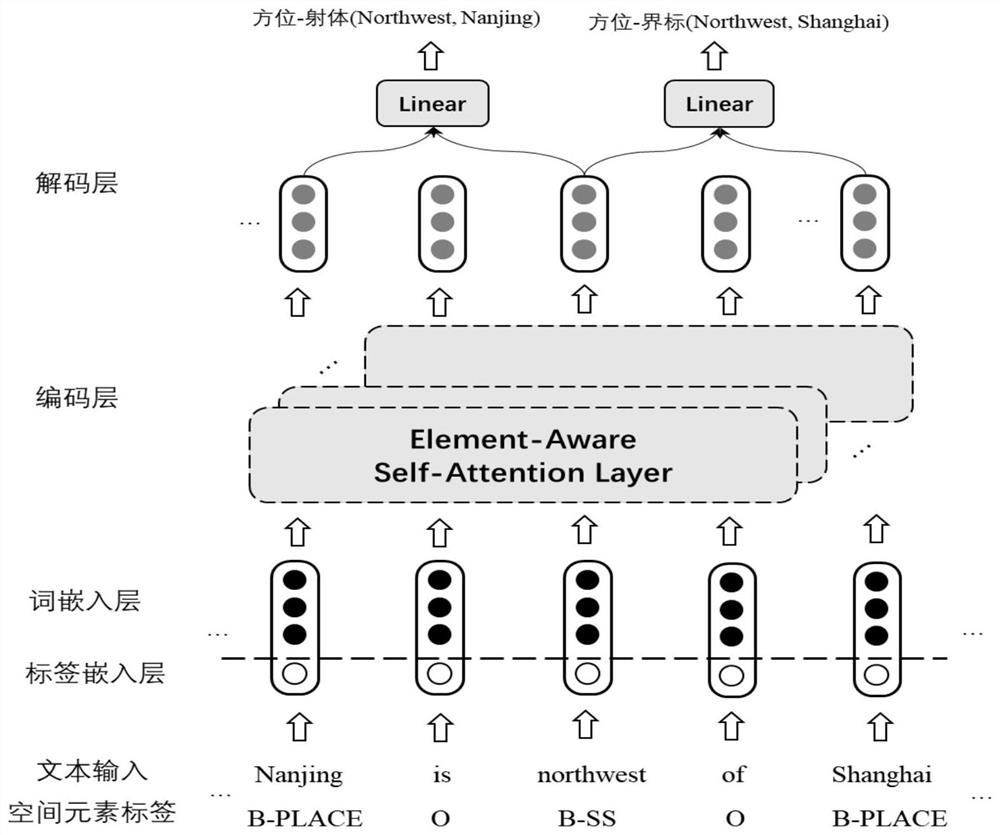Spatial relation extraction method and device based on semantic dependency
A spatial relationship and semantic technology, applied in semantic analysis, neural learning methods, natural language data processing, etc., can solve problems such as poor scalability, manual design of training classifiers, and inability to handle spatial relationships, achieving high accuracy and universal The effect of strong chemical performance
- Summary
- Abstract
- Description
- Claims
- Application Information
AI Technical Summary
Problems solved by technology
Method used
Image
Examples
Embodiment Construction
[0027] The present invention will be further described in detail below with reference to the accompanying drawings and specific examples.
[0028] like figure 1 As shown, the present invention proposes a spatial relationship extraction method based on semantic dependency recognition, and the spatial relational tuple is extracted from the non-structured text, including the following steps:
[0029] Step 1: Define the semantic dependency type according to the spatial relational tuple.
[0030] Step 2: Build a semantic dependent recognition model based on the depth self-focused network and training in the training data set. The spatial elements of the text and the pre-label note will be used to enter the semantic dependent identification model based on the depth self-focused network, to obtain all semantic dependencies between spatial elements.
[0031] Step 3: Combine the semantic dependent output obtained by step 2 as a complete space-related tuple.
[0032] The applicable spatial ...
PUM
 Login to View More
Login to View More Abstract
Description
Claims
Application Information
 Login to View More
Login to View More - R&D
- Intellectual Property
- Life Sciences
- Materials
- Tech Scout
- Unparalleled Data Quality
- Higher Quality Content
- 60% Fewer Hallucinations
Browse by: Latest US Patents, China's latest patents, Technical Efficacy Thesaurus, Application Domain, Technology Topic, Popular Technical Reports.
© 2025 PatSnap. All rights reserved.Legal|Privacy policy|Modern Slavery Act Transparency Statement|Sitemap|About US| Contact US: help@patsnap.com



